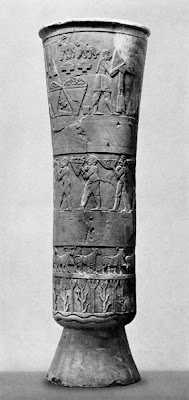Paleoart - The Oldest "Work" of Art?
 The Makapansgat jasperite cobble, 3 million years, South Africa.
The Makapansgat jasperite cobble, 3 million years, South Africa.The Makapansgat pebble is such a manuport, found in a cave in South Africa’s Makapansgat Valley, associated with Australopithecus' remains. It is a natural object with distinct color and shape and with marks that resemble a face. Although the marks themselves were produced by natural processes and not by the actions of our distant relative or ancestor, that is, the object was not made but only found, Bednarik associates it with paleoart.
We can say therefore that art started with the “ready-made”.
Marcelo Lima
Links:
Robert G. Bednarik - Manuports and very early palaeoart
CogWeb: Cognitive Cultural Studies (UCLA) - Hominid Family History
Human Evolution - Hominid fossil record and hypothesized lines of human evolution
 Early hominid sites in South Africa
Early hominid sites in South Africasource: http://www.indiana.edu/~origins/teach/P314/p3142000week2.html

Australopithecus afarensis compared to Homo erectus.
Credit: Laszlo Meszoly, Harvard U.
source: http://cogweb.ucla.edu/ep/Paleoanthropology.html
"On the basis of a skull found at Hadar in Ethiopia in 1992,
the artist John Gurche has produced a stunning
reconstruction of Australopithecus Afarensis.
This species flourished in the period 3.7 million
to 3 million years ago."
source: http://cogweb.ucla.edu/ep/Paleoanthropology.html#Introduction
Human Philogeny
source: http://www.oup.com/uk/orc/bin/0199255636/freelecturer/images/ho19f01.jpg
LINES OF HUMAN EVOLUTION
source: http://www.handprint.com/LS/ANC/evol.html
Hominidae : Humans, great apes, and their extinct relatives
"Phylogeny in part from Purvis (1995)."
source:http://tolweb.org/tree?group=Hominidae&contgroup=Catarrhini







Comments